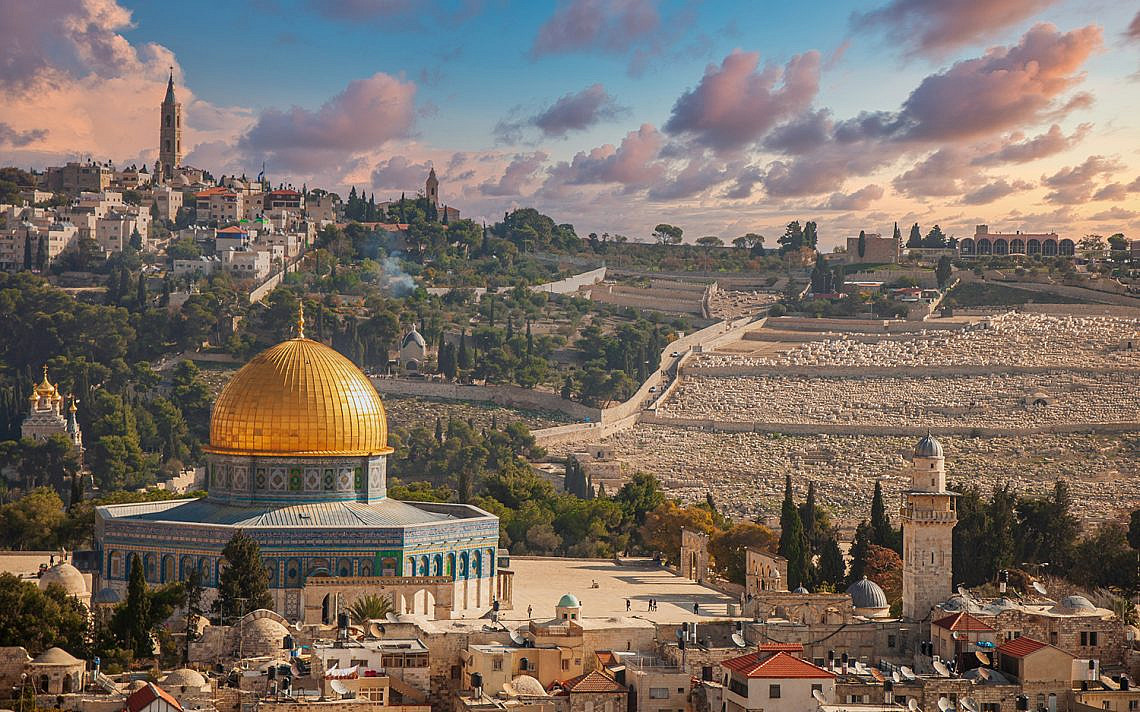
Posted originally on Haaretz . See the Hebrew version here.
When our 5-year-old daughter, Yael, came home from her Jerusalem school with a children’s Haggadah, telling the Passover story, she was excited to show it to me. I sat at our dining room table with her, delighted in her ability to sing Ha Lachma Anya [“this is the bread of affliction”], the Four Questions, and Dayeinu. Reveling in her skills, her confidence and how much she had learned at school, I experienced the pride of an immigrant father that his children were already reaping the educational and cultural benefits of our aliyah from America less than two years ago.
When Yael and I reached the last page of her Haggadah, my sense of pride and gratitude changed. Beneath the words, “Next Year in the Rebuilt Jerusalem” was a disturbing photo: a deliberately distorted image of the Western Wall with the Dome of the Rock removed from the background.
Blessed is the miracle of Photoshop that can, with a click of a mouse, eliminate a place that is holy to 1.6 billion people and almost 20% of Israel’s citizens. A publisher of children’s educational materials had forced its triumphalist and intolerant fantasy of Jerusalem into our homes and the minds of our children. On the way, they had also deceived kindergarten teachers around the country who only wanted to have a Haggadah for our children to explore and color – and who now unwittingly found themselves in a political and religious minefield.
This was not an image of the Third Temple, a religious aspiration that’s expressed throughout the Haggadah text. No, this was a current-day political and fanatical fantasy surreptitiously inserted into a children’s Haggadah by a publisher of children’s educational materials. This image was not about building, but rather about destroying. The photo was not about what we affirm, but rather about what should be negated.
This wasn’t the first time this kind of deceptive image was forced upon an unsuspecting Israeli public. In 2011 the IDF Rabbinate featured a similar photo as part of a Hanukkah packet for soldiers. A spokesman for the Military Rabbinate defended the photo, saying that it was a depiction of Second Temple times, long before Dome of the Rock was built. The problem with that explanation is the Kotel [Western Wall] appeared as, well, the Kotel, a remnant of the Second Temple, with Jews gathering for prayer in front, on the large plaza erected by Israel after 1967.
Then, in January of this year, parents in the Tel Aviv suburb of Givatayim were angered after municipality distributed to city schools a poster-sized photograph of Jerusalem with the Western Wall in the foreground — and the distinctive gold-plated Dome of the Rock above it airbrushed out.
At this specific moment of tension and violence, in particular, the publishing and dissemination of such photos is irresponsible. Rumors throughout the Muslim world falsely suggest that Israel has plans to demolish Dome of the Rock and Al Aqsa, and those rumors have fueled the violence in which many Israeli Jews and others have died. Pictures like this one contribute to that erosive atmosphere, in ways that are similar to Palestinian children being given maps on which Israel doesn’t appear.
Beyond the inexcusable political agenda forced upon unsuspecting children and teachers, there is in this propaganda Haggadah a failure of the religious imagination. I don’t want our children to think that the rebuilt Jerusalem has room only for us and for our holy places. I want Yael and her classmates to dream about a Jerusalem rebuilt on the foundations of tolerance and respect for others.
One of the greatest impetuses for us to make aliyah from America was to give our children a stronger Jewish identity, informed by being part of the majority culture where their Judaism could be experienced organically in a Jewish public square. Baruch HaShem, Israel has provided that for them and for us. But now that we’ve settled in, my fear is that their Jewish and Israeli identity won’t allow sufficient space to see and to respect the other, particularly Muslims and Christians.
In his post-exilic depiction of how the pilgrim would ascend to Jerusalem, the Psalmist speaks of the euphoria of being inside the walls of Jerusalem. “Jerusalem rebuilt, a city knit together…” (Psalm 122:3) It is from here that Israeli haggadot borrowed the word “ha’bnuyah” – Next year in rebuilt Jerusalem. Rashi comments that there is a heavenly Jerusalem that is already rebuilt, and that, in the future, the earthly Jerusalem will become like that.
This Passover, let’s dream of a different sort of rebuilt Jerusalem, one that is about joining together and not tearing apart, a Jerusalem in which our dreams will not be realized by the destruction of the other, a Jerusalem whose measures of beauty, wisdom and Torah will exceed its measures of suffering and hypocrisy. Jerusalem won’t be rebuilt by Photoshopping away the other, but rather by seeing the other and finding a way to live together.
You care about Israel, peoplehood, and vibrant, ethical Jewish communities. We do too.
Join our email list for more Hartman ideas